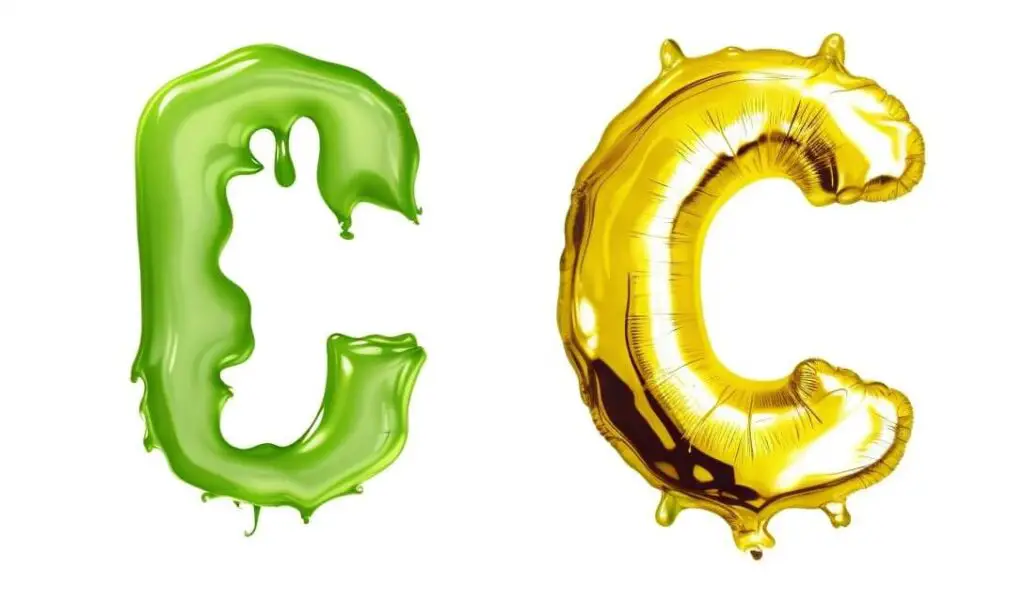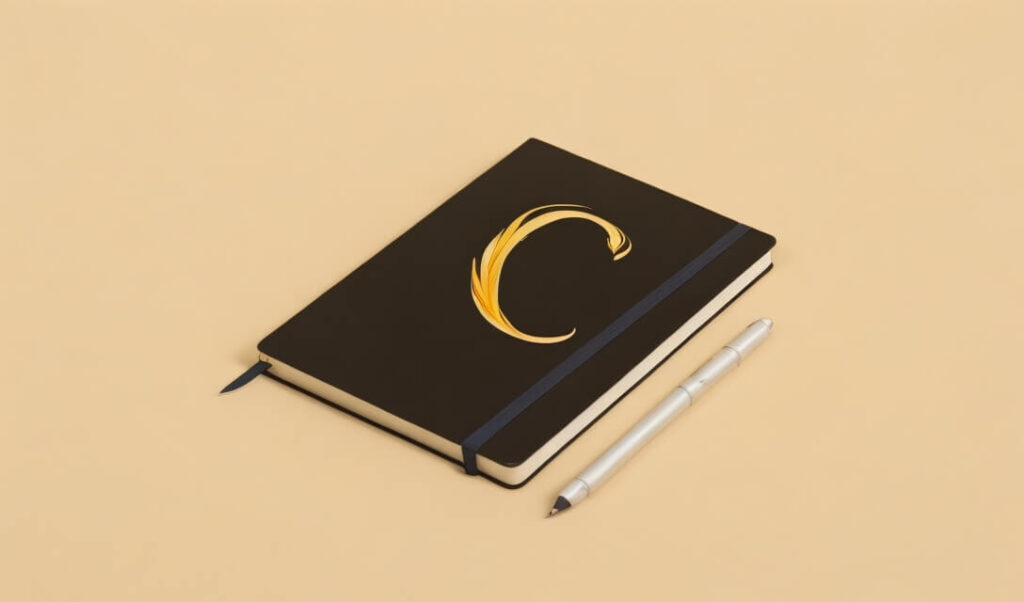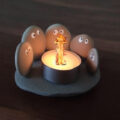The letter C, the third character in the alphabet, is not merely a symbol but a significant entity in languages, names, and symbols worldwide. Its unique sound and versatile usage make it a letter rich in historical and cultural context. When we delve into the realm of the letter C, we are immersed in a world of words and ideas. The letter C paves the way for creativity, coherence, and communication. Whether it’s through the words we use daily or the names that define identities and places, the omnipresence of the letter C is undeniable. Understanding its diverse usage allows us to appreciate the subtle intricacies of language and the power of a single letter.
The letter C is more than just a character; it’s a linguistic powerhouse, a cultural cornerstone, and a symbol of creativity. It’s a letter that has shaped our language, our names, and our world. From the words we speak to the names we bear, the letter C is a constant presence, subtly influencing our communication and understanding. Its diverse usage and significance make it a fascinating subject of exploration.
The Letter C in Different Contexts

Exploring Words and Things that Start with the Letter C
Embarking on an exploration of words and objects that start with the letter C, we stumble upon a myriad of intriguing examples. Here are some of them:
- Chair: A common piece of furniture providing comfort and support. Chairs are integral to our daily lives, providing a place to rest, work, or share a meal. They come in various shapes and sizes, each designed to serve a specific purpose. From the humble wooden chair to the luxurious leather recliner, chairs are a testament to human ingenuity and craftsmanship.
- Clock: A timeless object, counting hours and minutes. Clocks are a constant reminder of the relentless march of time. They come in various forms, from the grandeur of a towering grandfather clock to the simplicity of a digital wristwatch. Despite their different forms, all clocks serve the same purpose – to keep us grounded in the present and mindful of the future.
- Cat: A beloved domestic animal known for its playful nature. Cats are cherished companions, bringing joy and comfort to millions of households worldwide. Their graceful movements and independent spirit have inspired countless works of art and literature.
- Car: A significant invention that revolutionized transportation. Cars have transformed the way we travel, making distances that once took days to traverse now just a matter of hours. They have also shaped our cities and communities, influencing the way we live and work.
- Cup: A simple yet essential object for beverages. Cups are a staple in every kitchen, used for everything from morning coffee to evening tea. They come in various shapes and sizes, each designed to enhance the drinking experience.
- Computer: The cornerstone of modern technology. Computers have revolutionized the way we work, learn, and communicate. They have made information more accessible, making it possible to learn, explore, and create from the comfort of our homes.
- Crayon: A tool that adds color to the canvas of life. Crayons are a childhood staple, sparking creativity and imagination. They are a child’s first introduction to art, allowing them to express their thoughts and feelings through color.
- Cabbage: A versatile vegetable, making its way into various dishes. Cabbage is a nutritional powerhouse, packed withvitamins and minerals. It’s a staple in many cuisines, used in everything from salads to stews.
- Candle: A source of light and symbol of hope. Candles have been used for centuries to illuminate the darkness. They are also used in various religious and spiritual rituals, symbolizing hope, purity, and enlightenment.
- Cello: A beautiful string instrument resonating melodious tunes. The cello is known for its rich and warm tone, making it a favorite in orchestras and string quartets. It’s a testament to the beauty and complexity of music.
From everyday use items to technology and symbols, the letter C introduces us to a plethora of objects, all holding their own significance in various contexts.
The Letter C in Different Languages and Cultures
The Greek Letter C
The Greek equivalent for the letter C is Γ (gamma) but in terms of sound, the closest equivalent is κ (kappa). Kappa is used in many common Greek words such as καλός (kalos), meaning good or beautiful. Understanding this letter’s role can help enrich our understanding of language nuances, providing insights into linguistic development over time.
In the Greek language, the letter C doesn’t exist as a separate character. Instead, its sound is represented by the letter kappa (κ). This letter is used in many common Greek words, such as καλός (kalos), which means “good” or “beautiful”. This shows the influence of the letter C, not just in the English language, but also in other languages around the world.
The Letter C in Spanish
In the Spanish language, the pronunciation of the letter C varies. For instance, it’s pronounced as “k” in words like “casa” (house), and “s” in words like “cielo” (sky). These variations add richness to the language and illustrate the letter C’s versatility.
In Spanish, the letter C is a chameleon, changing its sound depending on the letters that surround it. For example, when followed by the vowels “a”, “o”, or “u”, it’s pronounced like the English “k”, as in the word “casa” (house). However, when followed by “e” or “i”, it’s pronounced like the English “s”, as in “cielo” (sky). This phonetic flexibility adds a layer of complexity and richness to the Spanish language, showcasing the versatility of the letter C.
Diverse Expressions of the Letter C

In Language and Vocabulary
The letter C takes on different roles in the formation of words – verbs, adjectives, and positive words. Here are some examples:
- Verbs: Like Call, Catch, and Create, to name a few. Each of these verbs represents an action, a state, or an occurrence. “Call” is an act of communication, “Catch” is an act of seizing or capturing, and “Create” is an act of bringing something into existence. These verbs, starting with the letter C, are integral to our daily communication, enabling us to express our thoughts, feelings, and actions.
- Adjectives: Such as Clever, Candid, and Curious. Adjectives are words that describe or modify other words, adding detail and richness to our language. “Clever” denotes intelligence or skill, “Candid” signifies honesty or straightforwardness, and “Curious” implies a strong desire to know or learn something. These adjectives, all starting with the letter C, add depth and nuance to our language, allowing us to express ourselves more precisely and vividly.
- Positive words: Compassion, Courage, and Creativity are a few examples. These words represent positive traits or qualities that are admired and valued in our society. “Compassion” is a feeling of deep sympathy and sorrow for others, “Courage” is the ability to face danger or fear, and “Creativity” is the use of imagination or original ideas to create something. These positive words, all starting with the letter C, inspire us to strive for better and to bring out the best in ourselves and others.
Whether it’s sparking action through verbs, adding description through adjectives, or spreading positivity through uplifting words, the letter C plays a crucial role in language and communication.
In Geography and Nature
The letter C doesn’t limit its influence to language; it also makes its mark in geography and nature. Here are some examples:
- Countries: Such as Canada, China, and Cuba. These countries, each with its own unique culture, history, and geography, are recognized and known worldwide. Canada, known for its vast wilderness and multicultural cities; China, renowned for its ancient civilization and rapid modernization; and Cuba, famous for its vibrant culture and beautiful beaches. The letter C not only starts the names of these countries but also represents the diversity and richness of our world.
- Animals: Including Cats, Cows, and Canaries. These animals, each with its own unique characteristics and behaviors, are familiar to many of us. Cats, known for their independence and agility; Cows, valued for their milk and meat; and Canaries, admired for their beautiful song. The letter C not only starts the names of these animals but also represents the diversity and richness of our natural world.
- Flowers: Carnation, Chrysanthemum, and Crocus are all part of nature’s bounty. These flowers, each with its own unique beauty and symbolism, add color and fragrance to our world. Carnations, symbolizing love and fascination; Chrysanthemums, representing longevity and rejuvenation; and Crocuses, signifying cheerfulness and gladness. The letter C not only starts the names of these flowers but also represents the diversity and richness of our natural world.
These examples reflect the letter C’s widespread presence in our environment, contributing to our understanding of the world.
Exploring the Spiritual Meaning and Symbolism of the Letter C

In spiritual symbolism, the letter C represents change and evolution, linking it to concepts of transformation and progress. Some cultures also relate it to the third eye chakra, symbolizing intuition and inner wisdom. The exploration of the spiritual meanings linked to the letter C allows us to view this character from a deeper perspective.
The letter C, with its open and receptive shape, is often associated with concepts of change, transformation, and evolution. It’s a letter that signifies progress and forward movement. In some spiritual traditions, the letter C is linked to the third eye chakra, which represents intuition, insight, and inner wisdom. This connection suggests that the letter C carries a spiritual energy that encourages introspection and self-awareness.
In addition to these spiritual meanings, the letter C also holds symbolic significance in various cultures and traditions. For instance, in ancient Egyptian hieroglyphics, the symbol that resembles the letter C represents the “ankh,” a symbol of life. In the Phoenician alphabet, the letter C (gimel) symbolizes a camel, indicating travel and journeys. In the Etruscan alphabet, the letter C was used to represent the “k” sound, signifying a change in language and communication.
By exploring the spiritual meanings and symbolism associated with the letter C, we can gain a deeper understanding of this versatile and significant character.
Practical Learning: Activities and Songs to Learn the Letter C
Learning the letter C can be a fun and engaging experience, especially for children. Activities like letter tracing, coloring, and crafts stimulate creativity while reinforcing the letter’s shape. Songs like “The Letter C Song” can make learning enjoyable and memorable, promoting active learning.
Learning the letter C is not just about memorizing its shape and sound. It’s about understanding its role in words and sentences, its significance in names and places, and its influence in our daily lives. There are many fun and engaging activities that can help children learn the letter C effectively. For instance, letter tracing activities can help children familiarize themselves with the shape of the letter C. Coloring activities can make learning more enjoyable, allowing children to express their creativity while learning the letter. Crafts, such as making a letter C collage or a letter C crown, can provide hands-on learning experiences that reinforce the letter’s shape and sound.
Songs are also a great way to learn the letter C. Songs like “The Letter C Song” can make learning fun and memorable. The catchy tune and repetitive lyrics can help children remember the letter C and its sound. Plus, singing along to the song can improve children’s pronunciation and rhythm.
The Art of Writing: Cursive and Calligraphy with the Letter C

The letter C lends itself beautifully to the art forms of cursive writing and calligraphy. The smooth circular motion required to write a cursive C can be a starting point for children learning cursive writing. In calligraphy, the letter C’s elegance is amplified, transforming a simple letter into a work of art.
Writing the letter C in cursive or calligraphy is not just about creating a beautiful character. It’s about understanding the rhythm and flow of writing, the balance between pressure and relaxation, and the harmony between form and function. In cursive writing, the letter C is written with a smooth, continuous motion, reflecting the fluidity and efficiency of this writing style. In calligraphy, the letter C is often embellished with elegant strokes and flourishes, showcasing the artistic potential of this letter.
Whether it’s in cursive writing or calligraphy, the letter C is a testament to the beauty and complexity of written language. It’s a letter that invites us to slow down and appreciate the art of writing.
Expanding Vocabulary with the Letter C
The letter C is a key player in many interesting words. Here are some examples:
- Words with C in the middle: Like Access, Accuracy, and Eclipse. Each of these words carries a unique meaning and usage. “Access” refers to the means of approaching or entering a place, “Accuracy” denotes the quality of being correct or precise, and “Eclipse” signifies an obscuring of the light from one celestial body by the passage of another. These words, with C in the middle, enrich our vocabulary and enhance our expression.
- Two-letter C words: Like Cc, used in emails for carbon copy, or Ci, an old term for a citation. These words may be short, but they hold significant meanings in specific contexts. “Cc” is a common term used in emails to send a copy of the message to additional recipients, and “Ci” is an abbreviation for citation, used in legal documents and academic papers.
- Five-letter C words: Such as Chair, Crank, and Crane. These words represent a range of meanings and uses. “Chair” is a piece of furniture, “Crank” is a part of an axle or shaft bent out at right angles, and “Crane” is a large, tall machine used for moving heavy objects. These five-letter C words add diversity to our vocabulary, allowing us to express ourselves more effectively.
These examples showcase the letter C’s presence in our vocabulary, contributing to language enrichment.
Names and Places: The Letter C’s Role in Personal and Geographical Identification

The letter C often starts names, such as Charles, Chloe, and Cameron. Places starting with the letter C include cities like Chicago, Cairo, and Cape Town. These names hold significance, shaping identities and marking locations worldwide.
Names that start with the letter C are as diverse as the people who bear them. From Charles, a name of Germanic origin meaning “free man”, to Chloe, a Greek name meaning “blooming” or “fertility”, and Cameron, a Scottish name meaning “crooked nose”. Each of these names carries a unique meaning and history, reflecting the diversity and richness of our cultures.
Places starting with the letter C are equally diverse and significant. From Chicago, a bustling city known for its impressive architecture and vibrant arts scene, to Cairo, the capital of Egypt, renowned for its ancient pyramids and rich history, and Cape Town, a beautiful city in South Africa, famous for its stunning landscapes and diverse wildlife. Each of these places holds a special place in our world, contributing to our understanding of geography and culture.
Conclusion
The letter C is more than just a character in the alphabet. Its versatility and wide-ranging usage make it an integral part of language, names, and symbols. From its roles in words to its presence in names and places, the letter C’s significance is deeply embedded in our daily lives. Embracing its diverse usage enriches our understanding and appreciation of language’s depth and complexity. The journey through the world of the letter C is a journey through language, culture, and life itself. It’s a journey that reveals the power of a single letter to shape our communication, our understanding, and our world.





Uh doesn’t X also do the same it makes the ks (Box) gz (Exist) ksh (Luxury), k, (Excited) eks (X-Ray)and z sound too (Xylophone)
Also you forget one more sound made by C the Ch sound